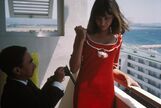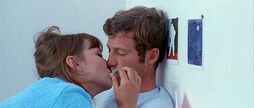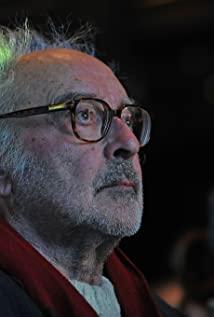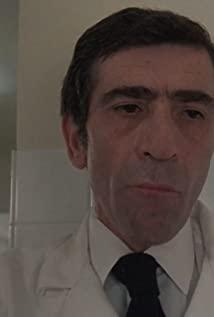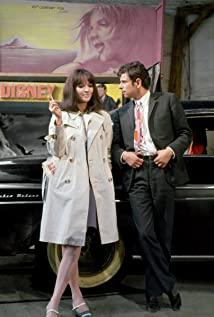There isn't a single person named Vieiro in this film, so where did the title "Biello the Madman" come from? It turned out that Vieiro was a clown in French folk art. He wore a wide white coat and white trousers, his face was painted white, and he often appeared in pantomimes. Folk artists even used this image to make dolls. And the title of madman here does not refer to a lunatic, but to the ugly and well-behaved jester in the feudal court for the entertainment of the emperor, that is, the distorted clown. In the film, Ferdinand reads the chapter about the Spanish painter Velázquez in "History of Art - Modern Art Volume 1" written by the famous art historian Eli Four. Full wrote that Velázquez's world was dark and full of "idiots, dwarfs, cripples, distorted, lavishly dressed clowns whose function was only to be good and ugly, to please the dead, lawless, trapped in Conspiracies, lies and intrigues cannot extricate themselves from the powerful." Ferdinand drew a line indicating the importance of meaning under "The clown with a twisted body." Mariana insists that the clown's name is Vieello. Folk clowns (to please the people) and court clowns (to please the powerful) come together here. The strange title endows this film with a chaotic plot and bizarre character behavior with a certain cryptic connotation, enticing interested audiences who are willing to seek and explore to decipher the audio-visual "code" system that constitutes the content of the film.
The film actually consists of three parts. The first paragraph describes the hero's sense of suffocation in the modern commercial society. Whether it is family or social circle, it is an unbearable prison for him, so when he meets Mariana, he finds that there is a chance for a romantic adventure, He eloped with her without hesitation. The second paragraph shows his failure to pursue his ideals. He originally wanted to enjoy the ideal love with his beloved in a natural environment far away from civilization and ugly, but the events of the world constantly disturbed his peace through his reading and memories, not to mention Mariana's unbroken thoughts , thinking about her "brother" and "swag money". His ideals can only be unrealizable dreams. In the third segment, our protagonist is pushed back into the real world full of violence and deceit, and he has no choice but to self-destruct.
Godard self-proclaimed: "I want to tell the story of the last romantic couple, the last of the 'New Love, Werther' and 'Hermann and Dolottie'." That is to say, Rousseau and The ideal love that Goethe once deliberately described has disappeared in modern society and is bound to disappear. Love has only become a self-deceiving lie or wishful thinking.
After watching the film, the poet Aragon wrote: "The chaos and disorder of the contemporary world is the material of the film. There are many dark sides in our lives, without which we would not have our life, but we try to turn a blind eye to these dark sides. He (Godard) uses these materials to create beautiful works from accidents and murders." This comment is obviously in line with Godard's thinking, because Godard used to regard filmmaking as an experiment. He once said: "You can think that Vieiro is not an authentic film, but it is an experiment with film after all." Another meaning of the word "experiment" in French is "the theory of time" ". Therefore, we can also translate this sentence of his as "But it is a film time theory after all." This understanding is valid, because he calls himself a "time theorist"; he said: "I use the novel's time theory. The form writes time theory, and uses the form of time theory to conceive novels, but instead of writing, I make movies.” Because he believes that traditional narrative methods are not suitable for his purpose, but also because he regards film as a very open form , he can mix and use different artistic styles in the film, can change the key at will, can mix poetic and comical interludes, so he shot "Mad Man Biello" such a shocking, experimental, full of new ideas 's video. On the surface, it looks like a thriller, but in fact, Godard uses the thriller style to explore the language of film. This is a diary-style autobiography, an investigation of love, and an analysis of the disintegrating contemporary society.
In the opening credits, Godard stated that the film is based on the novel "The Sinking" by American writer Ryan Neil White. The novel tells the story of a middle-class person in the United States who abandoned his wife and eloped with a woman who was hurtful. The woman and his lover got him involved in a Las Vegas robbery. He ended his downfall by finally killing them. Apparently, Godard only borrowed the story frame of the novel, in his own words: "I don't want to really tell a story, I just want to use this story as a shelf for weaving a rug, as a background, and I To weave my own thoughts on this rug, this background."
So how are his thoughts woven? First, he tries to avoid making the audience emotionally at the mercy of the film's plot while borrowing the techniques of thrillers. On the contrary, he wants to create a "distancing" effect, like Brecht, and let the audience become an active plot development. Participants, ask them to think critically about the idea of the film. The narration is like a chorus in a Greek tragedy, interrupting the formation of suspense by explaining the development of the plot. Sometimes the characters speak directly to the audience, so that the audience realizes that they are watching a movie. The narrative process is also interrupted by voiceovers such as singing and Ferdinand reading fragments of his diary.
Second, Godard introduces many artistic precedents or inserts excerpts from current events to develop rich film connotations. For example, he inserted some news headlines related to the involvement of the United States in the Vietnam War, and read chapters, novel fragments, verses, etc. Novelists such as Selina and Bernardin de Saint-Pierre and poets such as Rimbaud and Lorca. In the film, we can also find his intentional imitation of American director Sam Fuller and French director Jean Renoir.
The party at the beginning of the film is one of the most effective sequences in the film. To highlight the seriousness of the alienation of human nature in bourgeois society, Godard asked the party's guests to mechanically repeat commercial terms from car commercials, deodorant commercials, and hair mousse commercials as the content of their conversation, as red alternated on the screen. , yellow, blue and green lights. Godard mobilized all the means he thought fit to describe the contemporary society he knew. As for whether this description conformed to the traditional narrative method, he didn't care, or, in other words, he deliberately wanted to destroy the traditional narrative mode.
Near the end of the film, Ferdinand said, "I'm just a big question mark on the Mediterranean Sea." It is this sense of ambiguity, hopelessness, this sense of disintegration and alienation that adds strength to the film. Through the character of Ferdinand, Godard strongly expressed his extreme distaste for the modern consumer culture that paralyzes people's minds and his extreme hatred for violence and the mechanization of life; Realization is full of despair. Madman Vieiro is a cry from the heart, a very personal film that expresses real pain and anxiety, and it is bound to have a lasting vitality and a profound impact.
The superb acting skills of the male and female protagonists in the film add to the charm of the characters in the play. Godard said: "Anna Karina reproduces an active life, and Belmondo represents a reflection on life." Their combined performances completed Godard's outstanding "Theory of Time" with vivid images.
View more about Pierrot le Fou reviews



